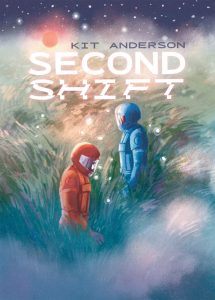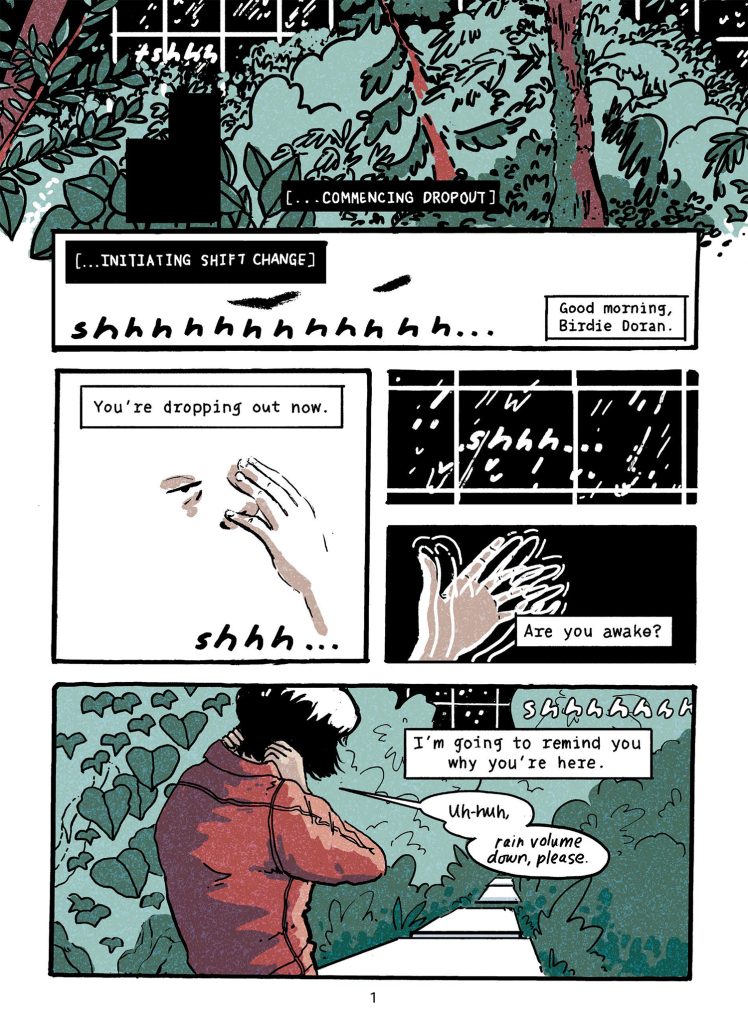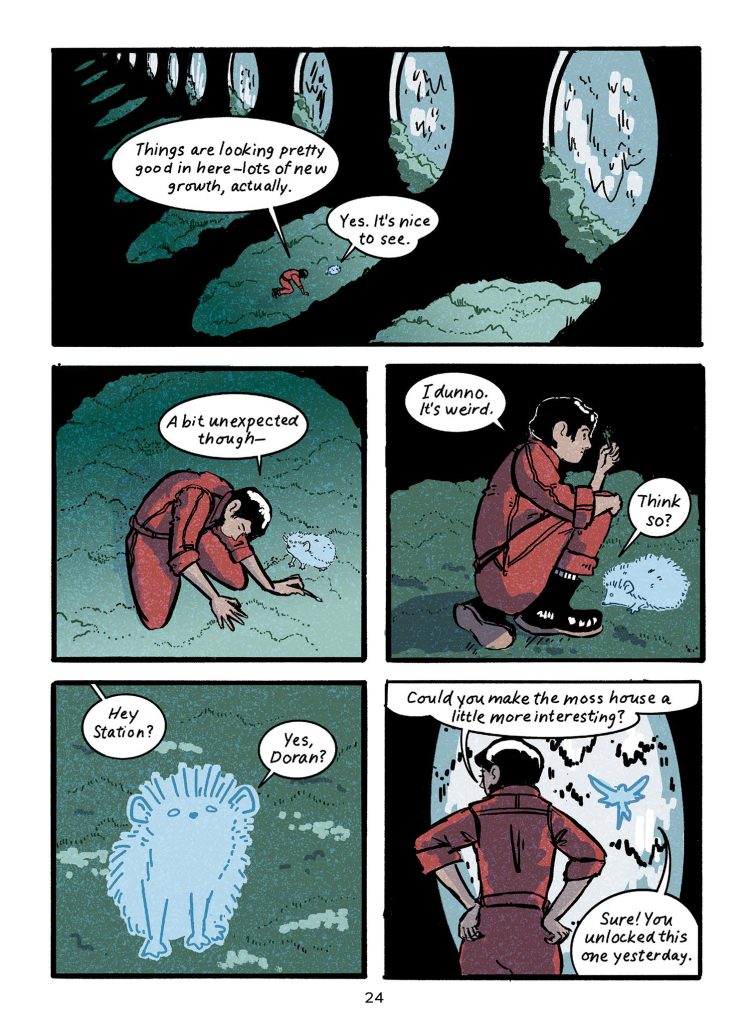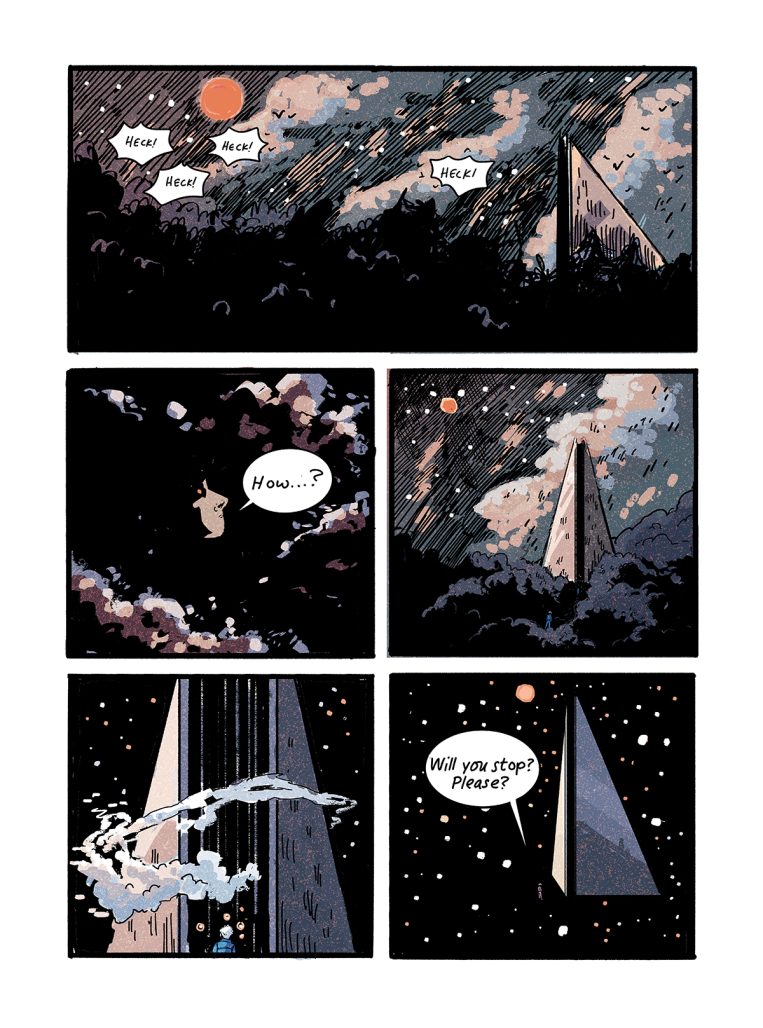Second Shift
Writer/Artist: Kit Anderson
Publisher: Avery Hill Publishing
Publication Date: June 2025
Stories in the science-fiction genre often help us wrestle with societal issues in an approachable, illuminating way. Kit Anderson’s first full-length graphic novel and second graphic book, Second Shift, out later this month from Avery Hill Publishing, can be enjoyed on a plot level alone, but in keeping with sci-fi tradition, its quiet depths also contain multitudes.
The setup of the story is as follows: Birdie Doran and a few other Terracorp workers live on a remote station. Birdie’s brother, Heck, also plays a central role. Their job is to help terraform new worlds by processing asteroids, called “payloads,” into resources, via the maintenance of machines that create soil and grow plants. They “drop in” to a virtual reality DreamSpace between shifts, then “drop out” when they are working.
But the workers are starting to notice some troubling signals that run counter to what the station is telling them. And what’s that place out in the distance, beyond the current station?
Those familiar with Anderson’s collection Safer Places may notice that the story feels like an expansion or reimagining of her short story “Lookout Station” (with a nod to her “Sleep Tape” shorts). That graphic collection, published last year, holds a special place for me. Anderson deepens some of the themes I enjoyed so much from it, like the meaning and influence of nature in our lives (including the commodification of natural concepts to suit our comfort and preferences), the impact of technology on our psyches, and the ways we remember.

Second Shift is sparely but skillfully told, both graphically and in text. Anderson’s characters and world are lightly stylized, with organic, mildly sketchy lines and textured color. Blue, red, and green are prominent anchors. Despite the minimalism, there are intriguing undercurrents and clues for the observant reader. Muttered dialogue, intercut imagery that isn’t fully explained, corporate messages, symbolic chapter headings, and other visual subtleties all leave us to piece together what’s really happening, alongside Birdie and the others.
Some elements seem very clear and striking, however. One major story point is the insidious and far-reaching sway of large corporations over the lives of their workers. Terracorp has no human leader we can see, and is embodied only by a shifting blue animal called Station, which tailors its form to staff preferences. This pervasive yet mild-mannered hold of predatory capitalism on workers echoes many of the issues we see in our world today. Terracorp takes care of its workers only insofar as it benefits their own self-interest, and manipulates them with virtual reality entertainment and emotional stimulation to encourage productivity.

It’s also not any stretch to connect Second Shift’s explorations to our current societal concerns about artificial intelligence (AI) and the nudges of algorithms on our preferences. In an age where we are wrestling with how we will relate to AI, the tailored sterility and the robotic mirror held up to our own psyches feel all too relevant. That the AI, and the mouthpiece of Terracorp, seems on its face to care about the workers only makes its true nature more unsettling, reminiscent of how some people today use an AI chatbot as a counselor. In isolated settings, all humans are vulnerable to the appearance of care and to superficial comfort.
There are yet other layers to be mined here. What is humanity’s relationship to nature, especially in a universe where there seem to have been significant environmental losses? Can entertainment substitute for connection? When corporations and AI act like our friends but train individuals for the gain of those leading them, is there any limit to the harm they can cause? How can ordinary people come back from that?

Such expansive themes are implied in this brief, darkly humorous, and yet still intimate story. Like Anderson’s previous book, Second Shift demands a second read.
If you are moved by subtle symbolism and like slow burn stories, you’ll find much to chew on in Second Shift. It might even make you look at our current world differently, as all good sci-fi does.
Second Shift is available now via Avery Hill, and in bookstores everywhere June 26
Read more great reviews from The Beat!

